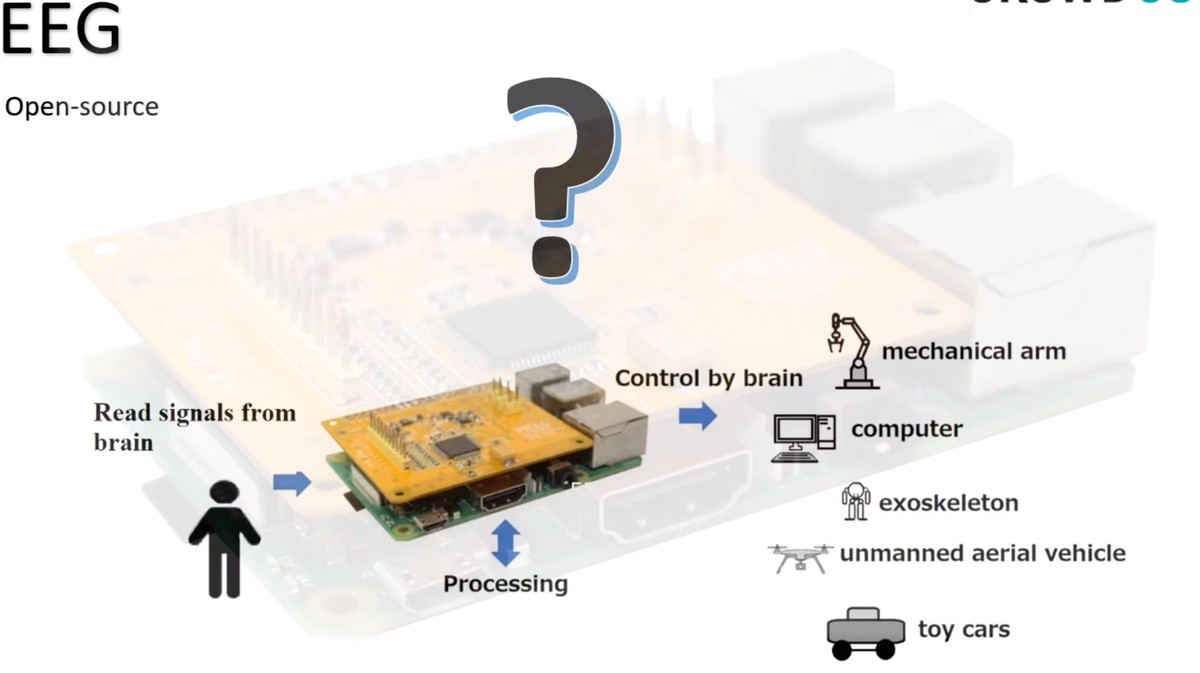

ABSTRACT breaks down mind-bending scientific research, future tech, new discoveries, and major breakthroughs.
Ildar Rakhmatulin is no stranger to using affordable Raspberry Pi devices for innovative projects. The researcher at Imperial College London has utilized the device to create a laser capable of neutralizing mosquitoes. But this time around, he’s co-opted the single-board computer to create a gadget capable of neuroscience.
On Wednesday, Rakhmatulin—who is a research associate at Imperial College in the U.K.—launched a crowdfunding campaign for PiEEG. It’s a special add-on for Raspberry Pis, called a shield, that allows the user to convert a single-board computer to a brain-computer interface.
Like other electroencephalography (EEG) devices, the PiEEG would be able to measure electrical activity in the brain. “This device can be used by machine learning enthusiasts to create projects to control robots and mechanical limbs with the power of thought, sleep control, meditation control, as a lie detector and many others,” Rakhmatulin wrote.
As Rakhmatulin explained to Motherboard, he started this project because he noticed interest in neuroscience has been growing over the years.
“The popularity of machine learning and data science has made this area even more popular, since working with real biodata in real time to assess the state and intentions of a person is very exciting,” he wrote in an email to Motherboard. “But despite all this, there are still no inexpensive devices for reading signals from the brain on the market, and as a rule, the devices sold are aimed at those who already have experience in neuroscience.”
At first, Rakhmatulin invented a small wearable brain-computer interface, but there was a chip shortage and the device became expensive, he said. He then decided to create a shield that can turn a Raspberry Pi into a brain-computer interface.
According to Rakhmatulin, Raspberry Pi is the most popular single-board computer on the market, and the easiest way to start taking the first steps in neuroscience and take measurements for different research. The PiEEG is a low-cost, high-precision, and easy-to-maintain device. It’s compatible with Raspberry Pi 3 or 4 models, which cost under $100. The shield itself will cost between $250 and $350, which is about $150 cheaper than some other price-conscious EEG shields.
Rakhmatulin and his collaborators have also published a paper demonstrating its functionality––they were able to control toy mice by blinking, for example.
“But the potential is much greater, and the device can be used in many different industries, depending on the user’s wishes and abilities,” he wrote.
Like many of his previous projects, the instructions are open source, as the main mission is to make neuroscience accessible to everyone with RaspberryPi and PiEEG.
ORIGINAL REPORTING ON EVERYTHING THAT MATTERS IN YOUR INBOX.
By signing up, you agree to the Terms of Use and Privacy Policy & to receive electronic communications from Vice Media Group, which may include marketing promotions, advertisements and sponsored content.

0 Comments :
Post a Comment